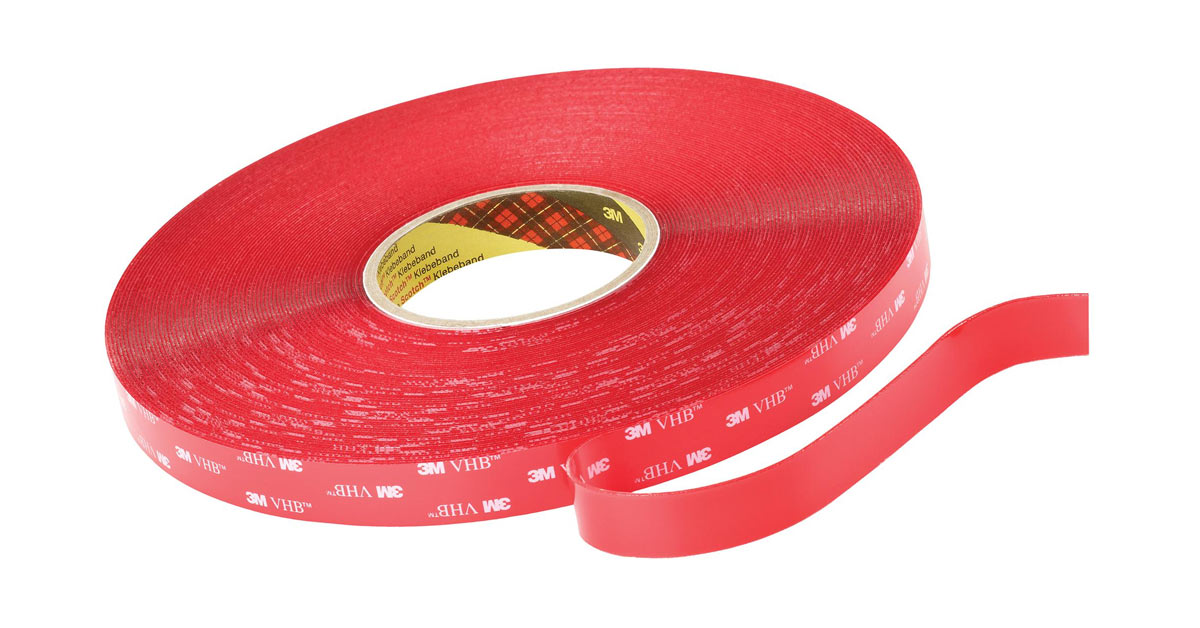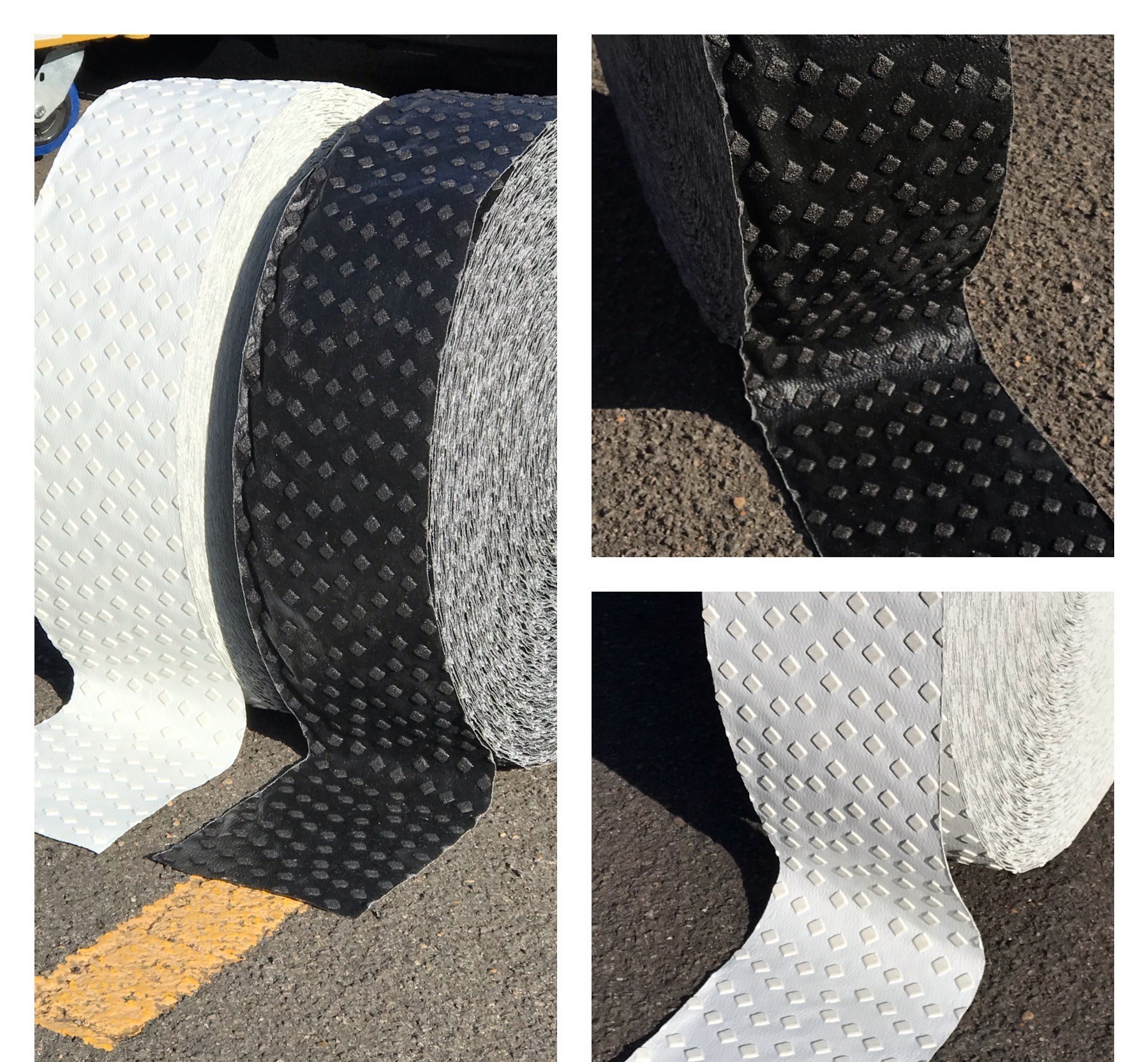Embossing and Tape Supplies’ Guide to Double Sided Tape

Embossing & Tape Supplies’ Guide to Double Sided Tape
What is Double Sided Tape?
Created by applying a thin adhesive layer to each side of a carrier substrate material, double sided tape, also known as double-faced tape or double-coated tape, is utilised by a wide array of industries for applications such as holding, bonding, mounting, splicing, and packaging. It’s most common use is to stick two surfaces together; typically in a way not visible in the end product. This is due to it being installed “in-between” rather than “overlaying upon” in use. This particular application allows for a cleaner look and improved craftsmanship.
Double sided tape can be either thin (such as paper-based) or thick (such as foam-based), coated with rubber, acrylic, or a modified version of these - often with differential properties. Double-sided tapes with thick bonding systems are generally more appropriately suited to bond to unusual, non-uniform, or highly patterned and textured surfaces. Thick bonding systems usually involve a foam carrier layer and may differ significantly in strength. Thin bonding systems are, as the name suggests, much thinner – sometimes so thin that they consist of nothing but pure adhesive on a silicone liner. Much like everything else at a manufacturing facility or on a job site, deciding on the right double sided tape for the specific application is of the greatest importance.
The Uses for Double Sided Tape
Did you know that in the auto manufacturing industries, double-sided tape has been substituted in for rivets and fasteners for years and is used to attach everything from dashboards to specialty car appliqués? Or that RV and truck manufacturers use specialised double-coated tape to connect panels together and fasten exterior mirror glass to the mirror housing bezel? Here are just a few other applications where double-sided tape is utilised:
Graphic Arts & Signage
When it comes to bonding, double sided tape is the go-to tool of choice for this industry. Choose from a variety of adhesion levels at Embossing & Tape Supplies based on what you need to stick together.
Splicing and Tabbing
For paper mills, double-sided tapes are essential to virtually every splicing, core-starting or tabbing requirement.
Convention or Expo Events
Every exhibition hall that lays down temporary carpet uses a very special double sided carpet tape which is removable after the trade show and leaves no residue. When holding and securing (i.e. a red carpet) carpets in place for trade shows or major events, double sided fabric tape is called to the rescue. These tapes generally feature a medium adhesion and tack, which allows for easy removal without residue.
Acoustics and Sound
With more buildings becoming airtight, sound is growing to become a big issue. Double-sided tape is often used in manufacturing to attach foam to wall panels or flooring underlayment to floors.
House Wrap and Vapour Barrier Seaming
Use double sided tape to overlap house wrap seams so water does not migrate behind it. To reduce labor, use a high-performance double sided tape to connect vapour barriers to walls in crawlspaces instead of using screws for a more air-tight seal.
4 Steps to Choosing the Right Double Sided Tape
Most tape failures can be avoided by following one simple rule: Pick the correct tape for the application. Sounds easy enough; but we find there’s a “one tape fits all” approach lurking on job sites and it’s causing an abundance of issues with your results. Tape is a tool, just like a saw or a hammer. In fact, you wouldn’t work with a reciprocating saw for a project that calls for a circular saw, so why use duct tape when the project calls for outdoor double-sided tape?
There are many different options available at Embossing & Tape Supplies. Before you just reach for the first one you see, follow these 4 steps to ensure you decide on the best possible tape for your requirements:
Step 1: What are the two surfaces you are bonding?
Choosing the correct double-sided tape starts by evaluating the surface characteristics of the two substrates you’re aiming to stick together. For example, the smoother and flatter the surfaces are, i.e. aluminium, glass, PVC, the thinner the tape can be. Conversely, the rougher the surface is, i.e. wood, brick, cement, stucco, the thicker the rough surface adhesive tape needs to be to offer adequate contact.
Step 2: What is your surface energy?
All surfaces have a property referred to as surface energy, the degree of attraction or repulsion force of a material surface exerts on another material. Substrates with a high surface energy form great surfaces for bonding, like glazed tile and glass found in the glazing industry, and bare metals. Plastics can vary from reasonably easy to very poor. For example, polypropylene and polyethylene are very difficult to stick to and call for a higher adhesion and a very tacky adhesive.
Conversely, a material like silicone has such “low surface energy” that conventional adhesives will not stick to it at all. Working with this material would, therefore, require an incredibly tacky and/or silicone adhesive.
It’s also important to take treated surfaces into consideration. For example, if a surface is covered with paint, the tape might stick well to the coating, but if there is a weak bond (low surface energy) underneath, the tape and the paint may peel off.
Step 3: What temperature resistance do you need?
Next, take your environment into consideration and decide on a temperature-resistant tape. The tackiness of the adhesive tape is heavily temperature-dependent, which means that the colder the conditions, the poorer the bond will be. If you are required to work at lower temperatures, then use a double-sided tape specifically designed for colder climates. The same holds true for extremely hot or wet weather conditions.
Dirt, humidity, and UV conditions all play a role as well. Deciding upon the correct temperature-resistant tape for the climate variables at hand is of the utmost importance to the success of your project.
Step 4: What other conditions should I consider?
When choosing the best double-faced tape for your project, it’s worth asking yourself these other key questions:
- How long do you require the tape to hold? Meaning, do you need a temporary or permanent solution?
- If you need to remove the tape, do you require it to be a clean removal with no residue?
- What width do you need?
- Does the tape need to be a certain thickness for the application to be successful?
- Is there any heat that will be used in the application process, i.e. in manufacturing?
- Are there any specifications you need or are required for the job at hand (i.e., EPA codes, UL approval, etc.)?
- What will the tape be exposed to while you are applying it, and afterward? Consider moisture, cold, heat, water, dirt and UV.
What it all boils down to is understanding these three key things: your job, your field conditions and your materials. Only then can you match the right adhesive with your project and choose whether you need heat-resistant, extra wide, or specialty outdoor double-sided tape. By thinking about and answering these questions in relation to the adhesive, you can increase the longevity and successful outcomes of your projects.
Contact Embossing & Tape Supplies
For More Information Embossing & Tape Supplies are distributors for the major tape companies in Australia, including 3M, Tesa, Stylus, Husky, Venture, PPC & many others with access to their worldwide technical resources. We are based in Sydney and deliver Australia wide, including Melbourne, Brisbane, Perth, Adelaide, Hobart. The team at Embossing & Tape Supplies are the experts in all types of adhesive tapes like automotive tapes. We have a combined knowledge of over 80 years and have been established since 1974.
Contact us today!




